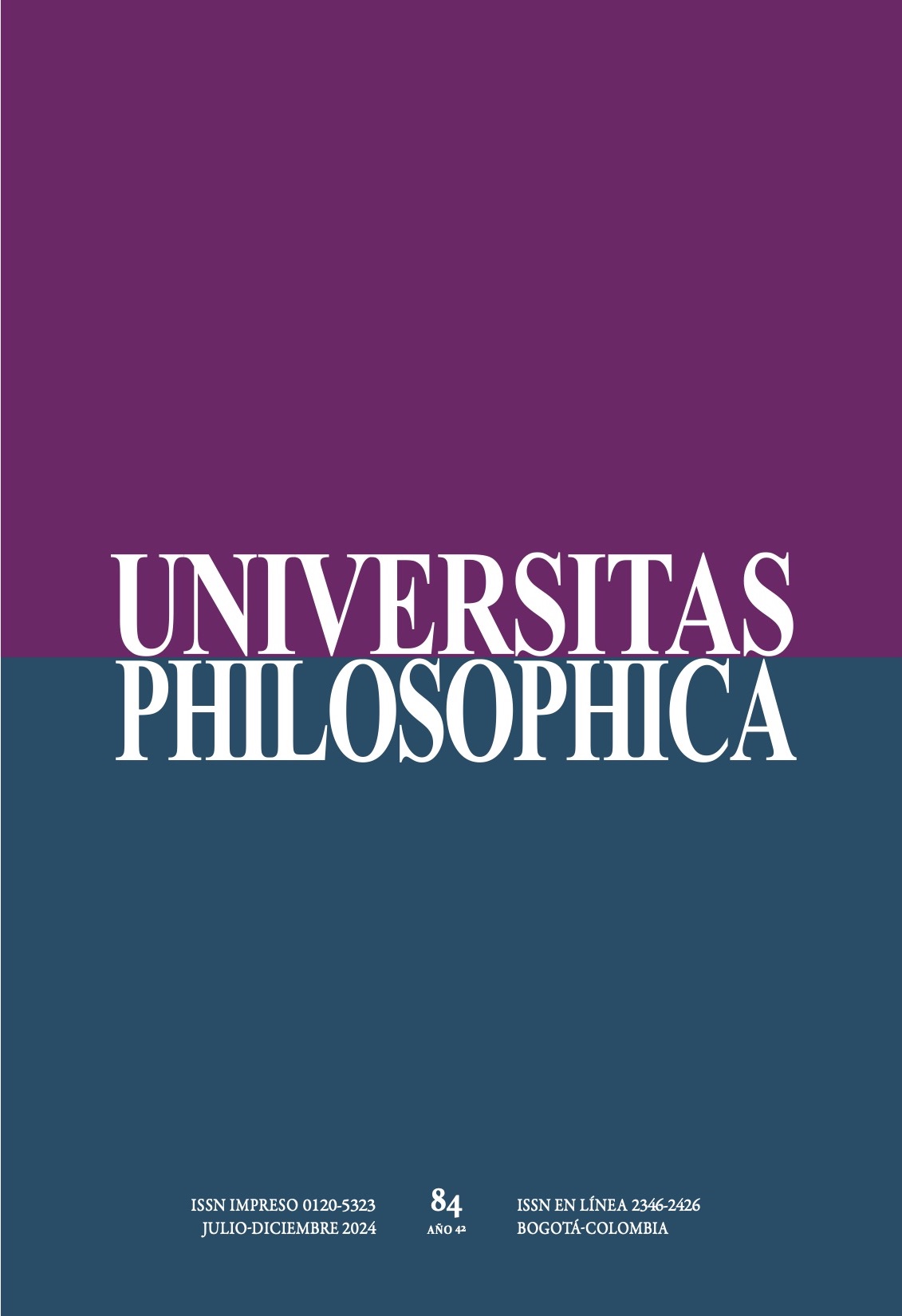Resumen
Este artículo presenta los resultados de investigación sobre “El cine animado y enseñanza de la filosofía” en la perspectiva Filosofía e Infancia de la Universidad Pedagógica y Tecnológica de Colombia. Su objetivo es analizar el cine animado como encuentro y posibilidad para la enseñanza de la filosofía. Para demostrar dicha posibilidad se llevan a cabo diversas experiencias de pensamiento y se toma como ejemplo la pieza cinematográfica Mi vecino Totoro (Miyazaki, 1988) que motivó preguntas, asombro, reflexiones, ejercicios de argumentación y diálogos filosóficos. El texto se divide en tres escenas analíticas. La primera presenta la relación entre las categorías empleadas para considerar el cine animado como una experiencia sensible que potencia en los sujetos posibilidades de pensamiento. La segunda aborda los caminos metodológicos que trazó la investigación. La tercera muestra los resultados de investigación que hicieron posible el encuentro entre cine animado y enseñanza de la filosofía: pregunta filosófica, experiencia y lectura.
Aristóteles. (1994). Metafísica. Gredos.
Ballestín, B. & Fàbregues, S. (2018). La práctica de la investigación cualitativa en ciencias sociales y de la educación. UOC.
Cabrera, J. (2015). Cine: 100 años de filosofía. Gedisa.
Castro, L. X. & Mora, D. X (2022). Enseñanza de la filosofía: una posibilidad para filosofar. En O. Espinel-Bernal., L.A. Mariño Diaz, & O. Pulido Cortés (comps.), Enseñar, aprender educar: formas de la filosofía (pp. 61-86). Corporación Universitaria Minuto de Dios UNIMINUTO.
Cerletti, A. (2008). La enseñanza de la filosofía como problema filosófico. Libros del Zorzal.
Chacón-Quiroga, K. J., & Pulido-Cortés, Ó. (2024). Researching in Philosophy and Childhood: Trajectories, Multiplicities and Beginnings. The Researcher as the Power of a Look. Childhood & Philosophy, 20, 0130. https://doi.org/10.12957/childphilo.2024.80252
Deleuze, G. (1984). La imagen-movimiento. Estudios sobre cine 1. Paidós.
Deleuze, G. (1985). La imagen-tiempo. Estudios sobre cine 2. Paidós.
Deleuze, G. (1996). Conversaciones. Pre-textos.
Deleuze, G. & Guattari, F. (1997). ¿Qué es la filosofía? Anagrama.
Deleuze, G. & Guattari, F. (2004). Mil mesetas: capitalismo y esquizofrenia. Pre-textos.
Espinel, Ó. (2014). Filosofía, prácticas de sí y arte de vivir. Revista Fermentario, 2(8), 1-16.
Espinel, Ó. & Pulido-Cortés, Ó. (2017). Enseñanza de la filosofía. Entre experiencia filosófica y ensayo. Universitas Philosophica, 34(69), 121-142. https://doi.org/10.11144/Javeriana.uph34-69.efee
Foucault, M. (2008). La hermenéutica del sujeto. Fondo de Cultura Económica.
Fresquet, A. M. (2014). Cine y educación: la potencia del gesto creativo. Reflexiones y experiencias con profesores y estudiantes de enseñanza básica y media dentro y fuera de la escuela. Ocho Libros.
Galazzi, L. (2012). Mirando conceptos. El cine en la enseñanza de la filosofía. Libros del Zorzal.
Galazzi, L. (2021). Las derivas del pensar cinematográfico como provocaciones para la enseñanza de la filosofía. Praxis & Saber, 12(29), e11607. https://doi.org/10.19053/22160159.v12.n29.2021.11607
Hadot, P. (1998). ¿Qué es la filosofía antigua? Fondo de Cultura Económica.
Hadot, P. (2006). Ejercicios espirituales y filosofía antigua. Ediciones Siruela.
Hadot, P. (2009). La filosofía como forma de vida. Alpha Decay.
Kohan, W. (2009). Infancia y filosofía. Progreso.
Ladino-Quiroz, W. O., & Castellanos-Murcia, E. V. (2022). Philosophical Camp: Playful Experience of Thinking with Childhood. Childhood & Philosophy, 18, 01-20. https://doi.org/10.12957/childphilo.2022.67275
Lara, P. & Pulido-Cortés, Ó. (2020). Escritura como práctica de sí y escuela rural. Praxis & Saber, 11(25), 21-45. https://doi.org/10.19053/22160159.v11.n25.2020.10480
Larrosa, J. (2009). Experiencia y alteridad en educación. En C. Skilar. & J. Larrosa (comps.), Experiencia y alteridad en educación (pp. 13-44). Homo Sapiens Ediciones.
Mariño-Díaz, L. A. (2012). La educación filosófica como experiencia y posibilidad. Praxis & Saber, 3(5), 187-207. https://doi.org/10.19053/22160159.1136
Mariño-Díaz, L. A., Rivera-Rivera, M. H., & Rincón-Cuevas, S. A. (2021). El cine y los gestos de la guerra en la infancia. En M. Suárez-Vaca. & Ó. Pulido-Cortés (coords.), Infancia y guerra. Imágenes, tiempos, movimientos (pp. 143-270). Editorial UPTC. https://doi.org/10.19053/97895866∫06134
Miyazaki, H. (dir.) (1988). Mi vecino Totoro. Studio Ghibli. [Película].
Pulido-Cortés, Ó. (2011). Aprender y enseñar filosofía en el mundo contemporáneo: de la mercantilización del pensamiento al despliegue de su ejercicio. Cuestiones de Filosofía, (11). https://doi.org/10.19053/01235095.653
Rancière, J. (2010). El espectador emancipado. Manantial.
Suárez, M. & Mariño, A. (2020). Pesando la filosofía: voces de la infancia. Nefi.
Suárez, M., Mariño A. & Espinel, Ó. (2017). Filosofía e infancia: un proyecto para cuidar de sí. En Ó. Pulido-Cortés, M. Suárez & Ó. Espinel (comps.), Pensar de otro modo. Herramientas filosóficas para investigar en educación (pp. 155-183). Editorial UPTC. https://editorial.uptc.edu.co/gpd-pensar-de-otromodo-9789586602570.html
Suárez-Vaca, M. T., & Pérez-Burgos, D. F. (2023). Childhood Words and Times as Forms of Political Experience. Childhood & Philosophy, 19, 01-25. https://doi.org/10.12957/childphilo.2023.77974
Ulloa-Ramírez, R. D., Montaña-Contreras, D. S. & Valderrama, A. V. (2024). Perspectivas cinematográficas en educación: creación artística y filosofía. En M. T. Suárez Vaca &. J. Acosta Gutiérrez (comps.), Infancia, arte y pensamiento. Tres hilos para un telar encantado (pp. 83-106). Editorial UPTC. doi.org/10.19053/uptc.9789586608336
Watsuki, N. (2005). The Art of My Neighbor Totoro: A Film by Hayao Miyazaki. Studio Ghibli Library.

Esta obra está bajo una licencia internacional Creative Commons Atribución 4.0.
Derechos de autor 2025 Rafael David Ulloa-Ramírez, Liliana Andrea Mariño-Díaz



